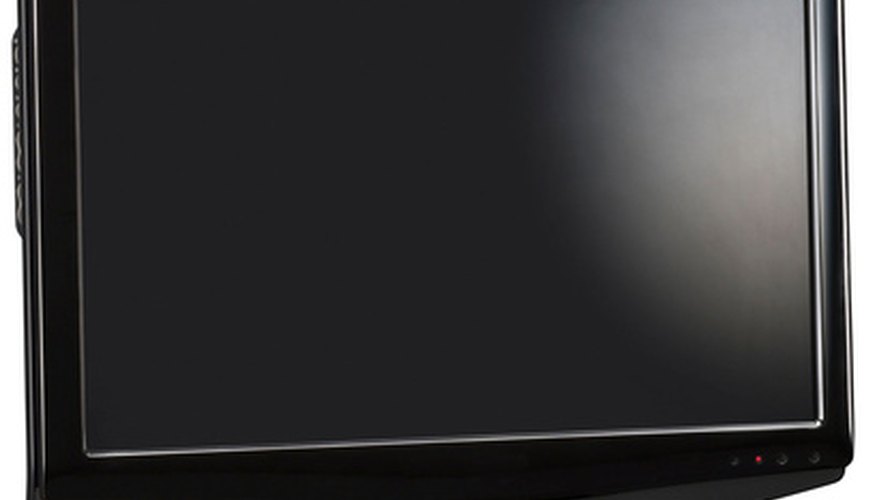Hot spots, also known as hot pixels, are common LCD TV problems that you can fix yourself. LCD screens are made up of hundreds of thousands of pixels and each pixel is made up of three colour cells--red, yellow and green. These pixels combine with other pixels to make the multicoloured pictures you see on your screen, turning themselves on and off to make different pictures. When all three cells are stuck on, the pixel appears white, or "hot." To fix this problem, you can either download computer software or manually adjust the pixel back to normal.
Locate the S-video ports on your TV and your computer. On a TV, you can usually find the S-video port on the back of the TV labelled "S-video In." If your computer does not have an S-video port, a VGA-to-video adaptor will work. Once the two devices are connected, access the S-video input on your TV.
- Hot spots, also known as hot pixels, are common LCD TV problems that you can fix yourself.
- On a TV, you can usually find the S-video port on the back of the TV labelled "S-video In."
Download a program such as JScreenFix and open the program to your screen. Enlarge the program to full screen to check your entire TV screen for hot spots or other damaged pixels.
- Download a program such as JScreenFix and open the program to your screen.
- Enlarge the program to full screen to check your entire TV screen for hot spots or other damaged pixels.
Increase your TV's resolution to its maximum quality and drag the program window over the hot spot. After about five minutes, move the window to check if the pixel has returned to its normal colour. If not, repeat the process.
Locate and memorise the location of the hot pixel. Turn off your screen. If you don't turn off the screen, you risk damaging more pixels in the process.
Hold the damp (not wet) cloth against the hot pixel. With the pencil eraser or small stylus, press gently on the cloth directly on top of the pixel. Pressing too lightly has no effect, but pressing too hard can either damage more pixels or crack the screen.
- Hold the damp (not wet) cloth against the hot pixel.
- With the pencil eraser or small stylus, press gently on the cloth directly on top of the pixel.
Move your tool in small circles, "massaging" the pixel. When this method works, it causes the pixel to react and turn itself on and off
Utilise the "tapping" technique if the massaging technique does not work. Turn your TV to an entirely black screen. Without the cloth against the screen, gently tap the tool against the pixel. Do not tap too hard to avoid further damage.
TIP
Contact your TV manufacturer for professional assistance if your TV is still under warranty.
